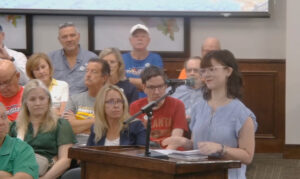Motorists weary of battling clogged traffic on Ga. Highway 54 may get a touch of relief in early spring, thanks to efforts from the Georgia Department of Transportation.
DOT plans to install a new “intelligent” signal timing system along the corridor to maximize efficiency and, hopefully, improve traffic until a longer-term solution can be devised and implemented.
The smarts of the system come in the ability for the computer to analyze live traffic data, and change the timing of the lights as conditions warrant, DOT officials said. It’s possible the system could be fully up and running by March, giving engineers time to tweak the various light timing scenarios, according to DOT State Signal Engineer Alan Davis.
The plan, unveiled Thursday, would stretch along the highway from Willowbend Road all the way to the county line along Ga. Highway 54, and perhaps a short distance up and down Ga. Highway 74 as well.
The project won’t cost the city a dime, as the estimated $30,000 to $50,000 will come from funds managed by the Atlanta Regional Commission. Those funds are set aside to improve signal timing to mitigate traffic congestion and help improve air quality, Davis said.
The project involves installing more sensors in the road, but the good news is that the existing traffic lights are already able to communicate with each other on a network, officials said.
More sensors will mean more data, and with the new system the data can be monitored remotely, which will also provide better information on future traffic studies, Davis said.
As for the signal timing, DOT District Traffic Engineer Michael Presley said while more prioritization could be given to traffic on the highway, that would extend the wait times for traffic on side streets waiting to get onto Hwy. 54. The DOT will work with the city to make sure the city’s needs are met with the various timing schemes.
One of the problems with the side streets, Presley added, is at the popular The Avenue shopping center, because it doesn’t have much room to stack vehicles waiting to get onto the highway before the cars block in other parked vehicles.










Leave a Comment
You must be logged in to post a comment.